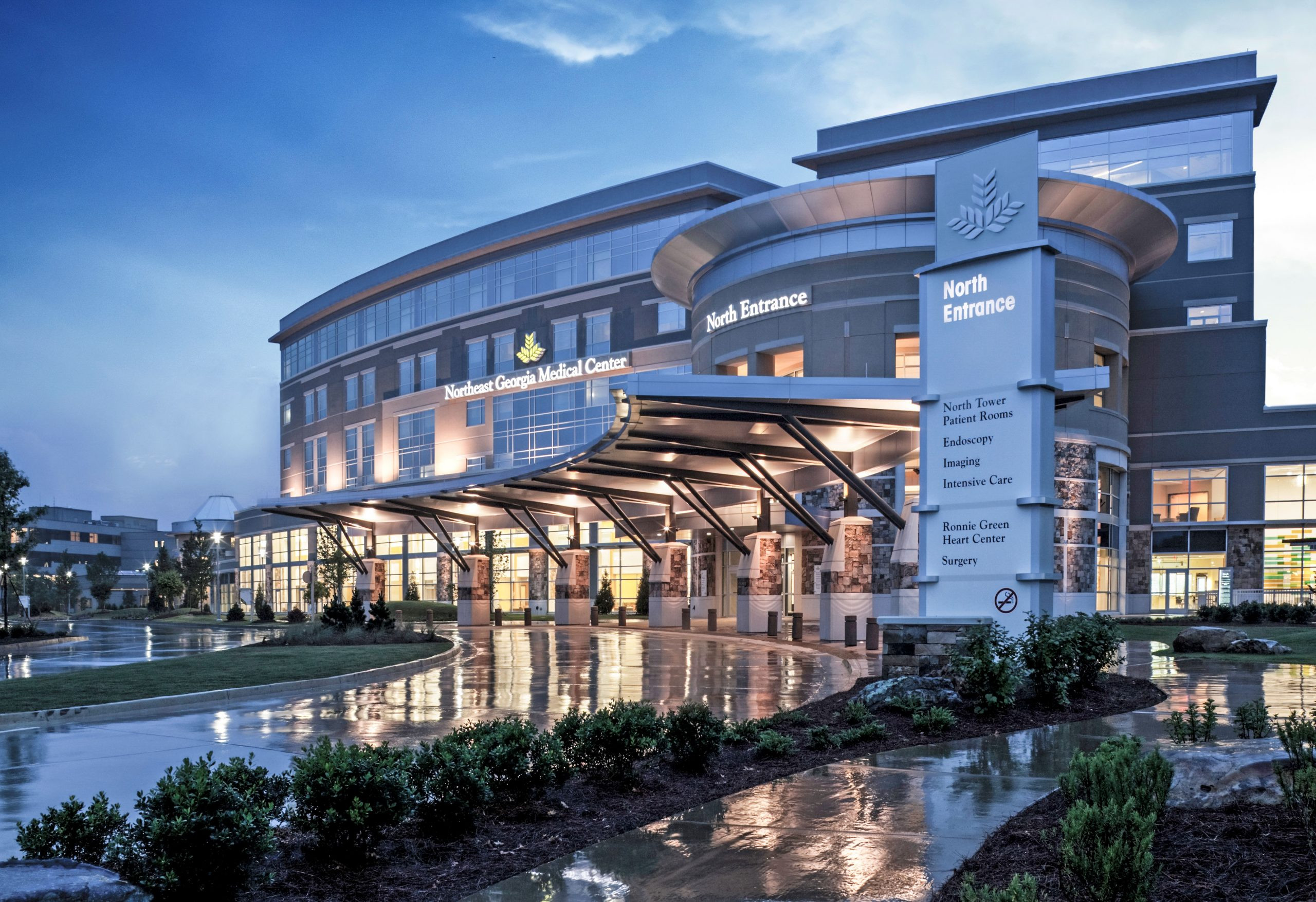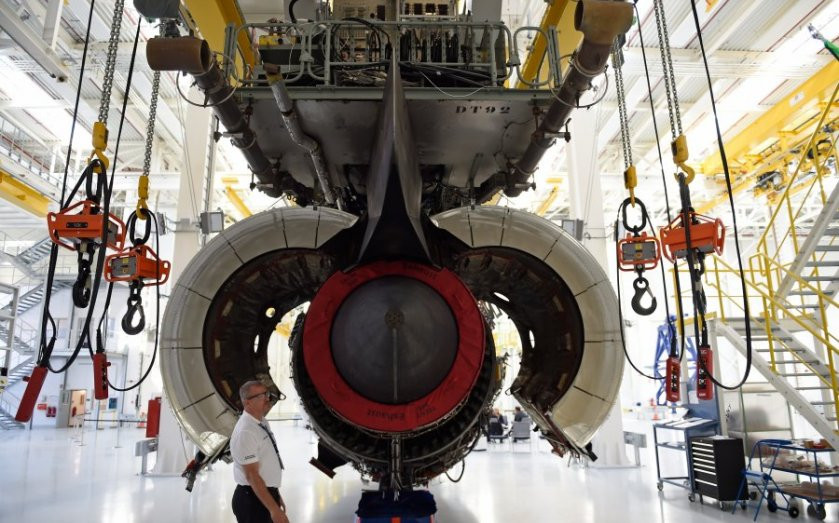The demand for new data centers isn’t showing any sign of slowing. With new projects being announced each week, keeping track of the latest data center developments is not always easy.
To keep you informed about the latest data center news involving design, construction, and related developments, we bring you the highlights from the past month.
Apple co-founder Steve Jobs once called the personal computer “the equivalent of a bicycle for our minds.”
But, as cloud computing, artificial intelligence and smartphones change America by the nanosecond, one must wonder how the late inventor of the iPhone would characterize data centers — the enormous industrial facilities that power our computers, secure our data, and are responsible for the functioning of virtually all internet technology.
“The No. 1 word that comes to mind is scale,” said Kristina Metzger, a CBRE (CBRE) vice chairman specializing in data center capital markets. “I’ve been exclusively focused on data centers for the last 15 years, and, from where I started to where I am today, it’s a completely different industry.”
It’s one, too, that needs — and draws — a lot more capital than before. Never mind billions. Think trillions.
Between 2024 and 2028, global investment in new data center capacity will reach $2.2 trillion, or average $443 billion annually, according to Moody’s Analytics. JLL (JLL) Capital Markets research found that the U.S. co-location data center market has doubled in just the last four years, with occupancy increasing at a 30 percent clip annually since 2020.
Then there are the deals. Amazon plans to invest $3.5 billion into New Albany, Ohio, by 2030 for an Amazon Web Services data center campus. This year, Digital Realty, the world’s largest sponsor of cloud-carrier data centers, and Blackstone (BX), the private equity behemoth, announced a $7 billion deal to build campuses across two continents, including a 7.5 million-square-foot data center campus near Dulles International Airport in Northern Virginia.
“These are large, highly sophisticated, purpose-built facilities that are occupied by some of the most financially sound global institutions,” said Metzger. “When you look back 10 years ago at the size of the data center market, and of the average footprint of the facility, it was a fraction of the average requirement and facility being built today.”
Nic Bustamante, chief technology officer at Corscale, a U.S. data center developer, said that when he entered the space 26 years ago, a data center development cost no more than $200 million, and that amount of investment capital was usually reserved for stadiums and public works projects.
“In 2000, if you said you wanted to spend $1 billion on a data center, you would’ve been laughed out of the room,” said Bustamante. “Now you see folks spend, in some cases, $10 billion for data centers in a single location or campus. That magnitude of capital is becoming increasingly common, and in the past there was no conception of it.”
For some perspective, the two portfolios of Digital Realty and Equinix, another one of the largest global data center developers, span 71 million square feet and hold an asset value of $95 billion, according to Moody’s.
Investors are flocking into the space.
In 2021, KKR (KKR) and Global Infrastructure Partners partnered to buy out CyrusOne, a major data center REIT, in a $15 billion all-cash transaction. In the minds of the private equity sharks, they were getting a bargain.
“It’s like follow the leader. When you start to see bigger private equity firms allocating capital, chasing a sector, there will be rising valuations,” said Mark Green, chief investment officer of Cottonwood Group, a CRE private equity firm. “And the ongoing digital transformation will ensure the continued tenant demand for data center space even during economic downturns.”
Green added that “recession or no recession,” the tech firms that lease data center space invariably need to house their computing power, and, depending on the investor base, data centers are stable, cash-flow assets with long-term leases and high-quality tenants.
Now, besides the vast swaths of land needed to serve as a literal foundation, you’re probably wondering why these windowless, monolithic, pseudo-industrial structures require so much damn capital.
Aside from housing the computers and servers that power Meta’s social media sites, AWS’s cloud, Apple’s iCloud infrastructure, Nvidia semiconductor software, the tweets running on Elon Musk’s X, and even the graphics processing of sports gambling sites, the average American data center also includes a dizzying labyrinth of circuit breakers, fiber optic cables, uninterrupted power supply systems, and air-cooled and liquid-cooled transformers (which basically ensure the entire thing doesn’t overheat on its own electricity).
So much for traditional brick and mortar.
“Data centers are hard to compare to most commercial real estate projects because they’re much more complex in every sense,” explained Bustamante. “The scale of everything and the complexity is an order of magnitude higher than a conventional construction project. … Building to building, they can differ widely, and the products we use, the systems we implement, even the consultants we bring in to design them are wildly different from one customer to the next.”
Yet, despite the physical complexity, development in the sector continues to surge. Northern Virginia accounted for four times as much data center growth as any U.S. market over the last four years, but the D.C.-Maryland-Virginia area is followed by growth in Southern and Western markets such as San Antonio, Austin, Salt Lake City and Reno, according to JLL.
The increased supply has been answered by ravenous demand. Over the past three years, North American data center vacancy rates in markets such as Chicago, Atlanta and Dallas have fallen from as high as 15 percent to as low as 1 percent, according to Jacob Albers, head of alternative insights at Cushman & Wakefield (CWK).
“That is all to say, it’s not enough. The major hyperscalers, as well as new entrants into the space, are seeking as much land and pathways into [electric] power as possible,” Albers said. “And power, preferably committed power from local utilities, is an arms race across North America and across the world.”
Ah, yes, an arms race — two words the world loves to hear. And, like many an arms race past and present, there are likely to be innocent casualties as the largest techno-capital forces on the planet seek to mine the energy that is expected to power trillions of dollars worth of data center development and maintenance.
Data centers are presently estimated to consume 5 percent of the total power consumption in the U.S., and that number is expected to reach 10 percent by the end of the decade, according to Patrick Wilson, a portfolio manager at CenterSquare Investment Management.
Wells Fargo has estimated that U.S. electricity demand could jump 20 percent by 2030, largely due to data centers.
Moreover, no one expects Microsoft, Amazon or any of the various applications that rely on social media and artificial intelligence to decrease their electricity requirements any time soon.
“It’s only going to grow,” said Green. “It feels like we might be in the first inning of a doubleheader when it comes to the need for the infrastructure just to support all of these initiatives.”
So, in a perverse irony, as technological innovations have spawned more data centers, and more capital has fueled greater innovation, the asset class’ inability to access reliable energy to deliver additional products to the market might be the greatest headwind facing data centers today.
“We’ve had so much expansion so fast that it’s put constraints on distribution of power in most major markets,” said CBRE’s Metzger. “In the current environment, we are unable to meet the demands of today with the limitations relative to power ability and the delivery of that power and equipment that’s needed to support it.”
But before we examine the power conundrum, let’s look at how we got here, and where we came from.
Capital markets creature
Talk to anyone who has been around data centers for a while, and you’ll be shocked at the humble origins of commercial real estate’s fastest-growing asset class.
“They were really a glorified warehouse with less penetration when we first started doing these things,” said Jim Kerrigan, founder of North American Data Centers, a CRE firm that has been developing data centers for 26 years. “When we look at what they were, it was repurposing old industrial properties. There was no speculative leasing at the time.”
Following the emergence of the tech giants like Google and Yahoo in the 1990s, and coming on the heels of the breakup of Bell Systems and AT&T in the early 1980s, data centers rose from the ruins of old school telecommunications and the birth of the internet. After firms like MCI, Version and Nextel had already laid down fiber-optic cable across Loudoun County, Va., and much of the surrounding Washington, D.C., area during those heady decades, it wasn’t long before the aging warehouses used to house telecommunications networks were repurposed to power social media websites like Facebook and YouTube by the mid-2000s.
“Prior to the dot.com crash, they were telecommunications hotels, and fiber-optic cable was most important. But what happened in 2004 is Facebook started, and Facebook, and others like them, all required data centers,” explained Kerrigan. “The demand drivers were normal demand drivers until 2012 and 2013, when the cloud emerged, and that took the growth into what we have today.”
“Even though AI gets all the press, the totaI direct tenancy or capacity of AI is only forming 30 to 40 percent of a demand that used to be zero three years ago,” CenterSquare’s Wilson said. “It’s still the typical bread and butter of cloud computing — where companies across the globe outsource their computer needs — that is still the 60 percent-plus of the force driving this demand.”
Sponsors are no longer looking for traditional 10- to 20-acre parcels, as they were in the pre-cloud era. Today, the parcels required to build modern data centers run 100 acres to 200 acres, according to Ryan Goeller, principal at KLNB, a CRE brokerage in Northern Virginia.
And, just as the physical space of data centers has evolved with the technology, so too has the acquisition or development capital.
“There’s a lot of debt and equity capital coming in, and what’s really changed in the last four years is the deal size,” explained Carl Beardsley, senior managing director and national data centers expert at JLL. “Before 2020, the average deal size was 3 megawatts to 10 megawatts, and, after 2020, we hit this burst of how we’re adapting technology as a society” as cloud demand continued and AI came online.
Here’s the thing few people understand: Data centers obviously require a tremendous amount of electricity and power, but their development requires an extraordinary amount of capital.
The past few years have seen several investment banks, capable of tackling behemoth data center loans, rush into the space. The commercial mortgage-backed securities market has captured much of that deal flow — again, primarily due to the sheer size of loans needed — but private lenders have also been active.
The typical 72-megawatt data center costs $1 billion to build, and, of that, $100 million might be the cost of the land, according to Carrington Brown, senior managing director for development and portfolio management at Affinius Capital, one lender who’s poured a significant amount of capital into the asset class due to the natural governors holding back supply.
“It’s mission-critical infrastructure, you have vacancies in the space at all-time low, and demand is at all-time high,” Brown explained. “When you look at people qualified to build and lease these data centers, it’s a number in the tens and twenties, and not in the hundreds or thousands like you see in other asset classes. So, if you’re a lender, it’s unlikely the sector can get overbuilt, and the real estate has a high likelihood of long-term tenancy.”
The lack of capable developers and sponsors is also driving a sharp turn away from the public markets and toward institutional capital to fund future development of the most futuristic asset class.
The data center industry has historically been controlled by publicly listed real estate investment trusts (REITs). They typically pool money from ordinary investors, return cash flow as dividends, and raise capital through secondary debt and equity offerings or by issuing unsecured corporate debt.
Data centers were attractive to public REITs, which don’t sell many assets and manage for long-term cash flow, mainly because of their tenancy dynamics: Hyperscalers like Google or Apple sign 10- to 15-year leases, in effect turning the data center into a long-term bond with small rent escalators. But while a data center was extremely lucrative to developers, what hurt the public REITs was the inability to grow cash flow once the assets were leased, creating a circular funding mechanism of raising huge amounts of equity or debt to develop or acquire before cash flows came online, making the investment dilutive for many public market investors.
But, as technology evolution demanded even greater mission-critical development from the cash-strapped public experts by the 2020s, private equity came to the rescue to fund the balance sheet for the next generation of development. In 2021 alone, Blackstone bought QTS for $10 billion; American Tower bought CoreSite for $10.1 billion; and KKR bought CyrusOne for $15 billion. In 2023, Brookfield (BN) bought bankrupt Cyxtera Technologies for $775 million.
“To really play in this space, when you’re trying to build facilities for these hyperscale tenants, it’s not uncommon for one asset to require 1 billion to multibillion dollars of capital to build it,” said Cushman’s Albers. “It’s a finite number of institutional capital that can play at that type of scale, at speed, and so each major institutional capital firm has picked one or more [public] operators to target one or more geographies.”
The once mighty public REIT landscape of data center specialists is now led by Digital Realty and Equinix, and even they aren’t immune from the lure of private capital.
“Both of those public companies are increasingly relying on third-party institutional capital that looks like us to fund their business,” said Brown. “The growth engine in this sector is development, so you’re seeing the public companies increasingly form joint ventures to take advantage of the growth opportunity in this sector, and recycle that capital.”
The power problem
Despite the many lucrative tailwinds pushing data centers into the future, the asset class faces several significant headwinds.
First, there are the supply chain challenges. Power requests from utilities once took no more than 10 weeks for the average data center to access. It now takes as long as 15 months, while the supply chain bottlenecks for transformers and substation components average three years, according to JLL’s Beardsley.
Then there is the changing regulatory climate. Take Virginia’s Loudoun County, one of the wealthiest counties in the U.S. and home to more data centers per square foot than anywhere in the nation. After years of allowing development to occur without consideration to zoning — and after receiving an average of $1 billion of property tax revenue a year from that development — residents finally woke up to the fact that they don’t want hundreds of monolithic data centers in their backyard.
A new measure is likely to be signed into law that will end by-right development, and require any new data center to navigate a complex bureaucratic process and review before it can be built.
“It’s a huge roadblock to data center development in the largest market in the world,” said KLNB’s Goeller. “It’s going to bring data development to a standstill in Loudoun and Prince William counties for a while. They’re going to kill the golden goose, so to speak.”
But the regulatory and supply chain issues pale in comparison to the true danger facing data center development: the asset’s insatiable demand for electricity and its corresponding environmental impact. Data centers account for 2 percent of global carbon emissions, according to MIT Press. But AI and cloud technologies will increase that percentage. Google’s greenhouse gas emissions jumped 50 percent in the last five years, according to the corporation’s annual environmental report.
“Data centers are the best and worst thing ever to happen to architecture environments built into the human species,” said Tommy Zakrzewski, director of building engineering physics at HKS, an architecture firm. “It’s the best thing because it’s radically changing how we live. … Everything we do is connected to data center communication, from health care to how we work.
“But the worst thing that’s happened is that its environmental impacts are staggering,” he continued. “These are immense, energy-intensive buildings. A 40-megawatt data center is 100 times more energy intensive than a regular, 500,000-square-foot-office building.”
And, right now, despite the popular optimism about a green economy — especially as so many corporations pledge to fulfill green mandates to ESG-focused investors — the renewable energy that could conceivably power these data centers into a cleaner, healthier future just isn’t there.
“We don’t have large-scale, cheap green energy available,” said Ayse Coskun, a professor of information systems engineering at Boston University. “Whether it’s with solar or wind or hydrogen-based fuel cells, there are issues with how much can be generated and with storing the energy — it’s sunny today in Boston, but tomorrow it might not be, and it’s the same thing with wind power.”
If green energy can’t answer the call, then data centers are turning to traditional utility providers for the power needed to fill their ravenous appetite for electricity.
“We’re seeing requests for power that are well in excess of what certain utility providers in the U.S. could ever anticipate,” said Harrison Klein, vice president and senior analyst at Cohen & Steers, a CRE investment firm. “AI could lead to data center demand increasing between 15 percent to 25 percent annually through the rest of the decade, and some utility providers, whether it be through power transmission or the generation side, aren’t necessarily equipped to provide that level of electricity.
Unfortunately for the average citizen, due to their importance to the American economy, data centers not only pay lower utility rates than households, but they get first dibs on electricity.
“What will happen here is electricity costs will rise more than they ever have in the last 50 years. Why? Because the reliability that data centers need from the grid will be prioritized,” explained Zakrzewski. “There will be big inequalities in electricity and grid management. It will create market disruptions across the United States that will probably be replicated across the world.”
As utility improvements and green energy upgrades fail to keep pace with data center development, greenhouse gasses will rise, higher temperatures will permeate across seasons, and blackouts will become the norm.
“The grid can’t support it now,” said Zakrzewski. “And, if we can’t support it now, there’s no way we can support it in the future considering the future growth.”
However harrowing this all seems, there’s no guarantee an impending data center-generated apocalypse is waiting to meet us by the middle of the century.
After making commitments to lower emissions (or to becoming emission neutral) by dates like 2030 and beyond, many hyperscalers are fulfilling ESG frameworks by offsetting their carbon production by buying renewable energy certificates. So a data center being developed by Amazon in Ohio is actually funding green energy technology in California — and this “emit here, pay there” cycle of carbon offset financing is occurring at a mass scale.
“What’s inevitably going to happen, as more data centers come online, is the market will go insane in terms of investments in renewable and clean energy systems,” said Zakrzewski. “Because the end user is asking to be carbon neutral, it’s driving the market to invest in more renewable energy.”
Then there’s the grid. Mark Nakatani, global practice director at HKS, said he recently worked with a major utility firm that owns one-fifth of the national grid — and learned that it’s using World War II-era technology. To this end, rather than be passive victims, he said the hyperscalers will likely create their own mini-grids and sell that power back to the public, at either higher or lower prices.
“What they will do is develop microgrids, their own source of generation, whether it’s privatized or not,” said Nakatani. “They can sell the power back to the local grid.”
Regardless of how well the sources of energy respond to the power conundrum generated by data centers, there’s no denying that this once minimized asset class is likely to determine the present and future of commercial real estate.
“It will get fueled by a lot of investment because the one critical infrastructure that’s as important as food and water is data centers, the access to information,” said Zakrzewski. “Power will be that new utility that we can’t live without.”
Brian Pascus can be reached at [email protected]
Read the latest edition of the Commercial Observer online!


















